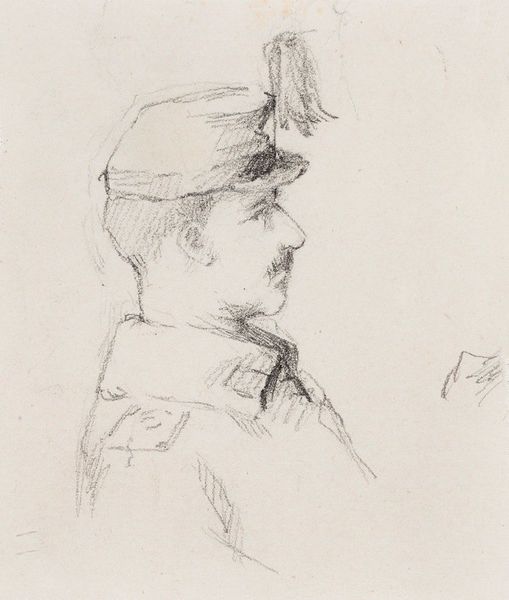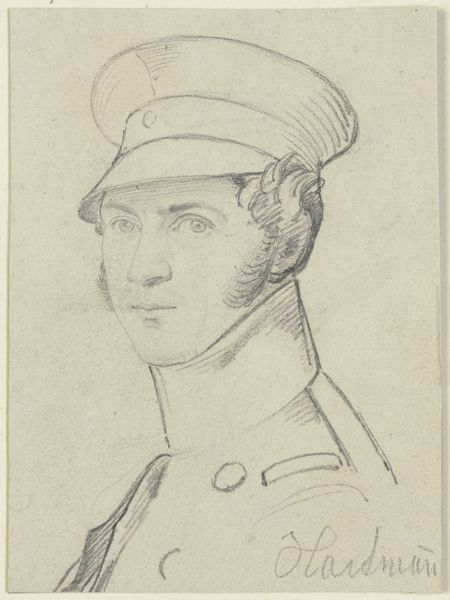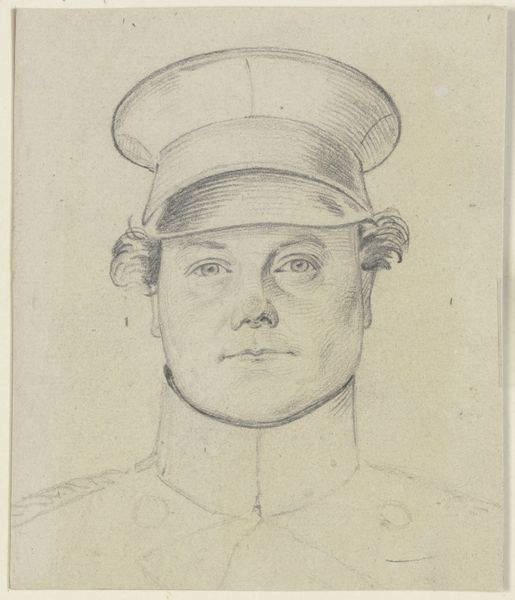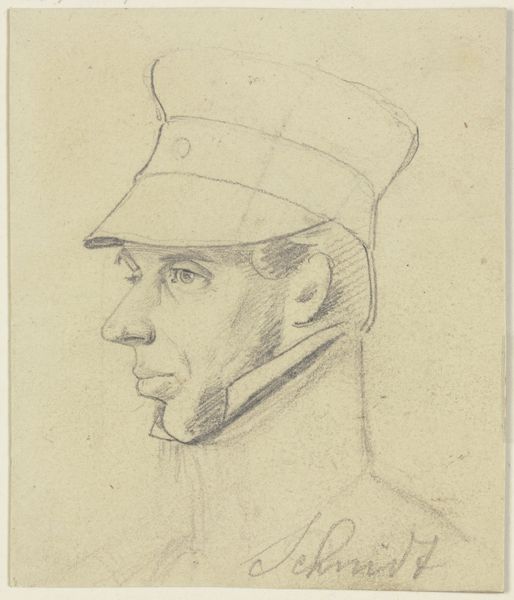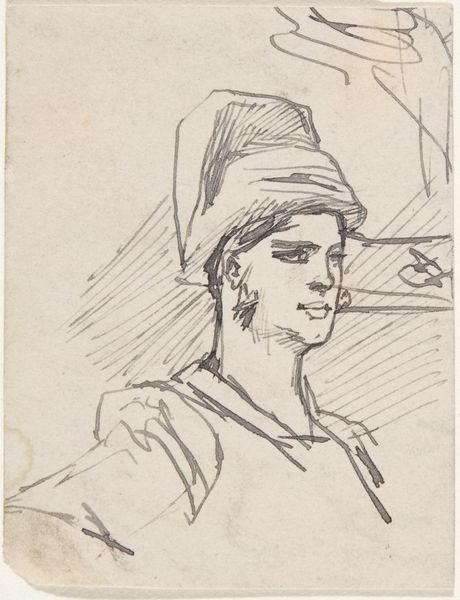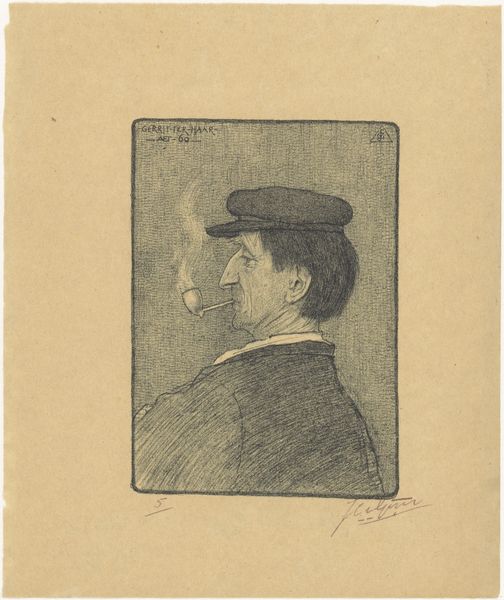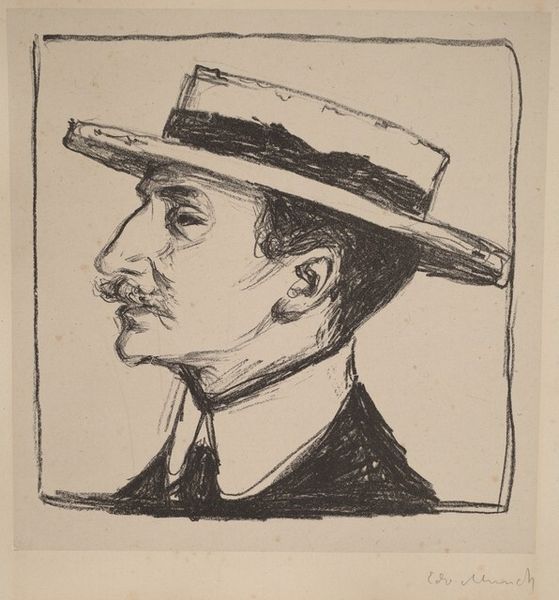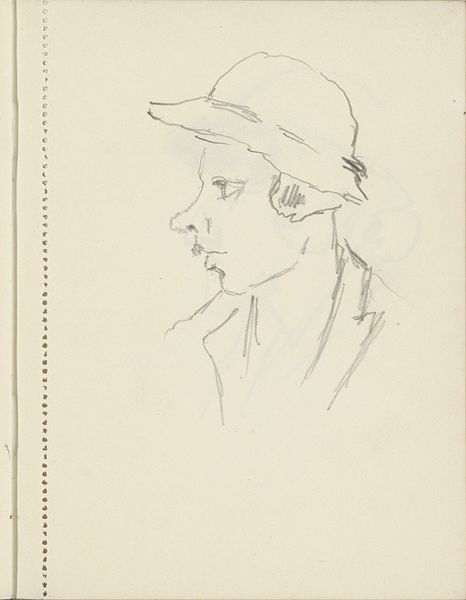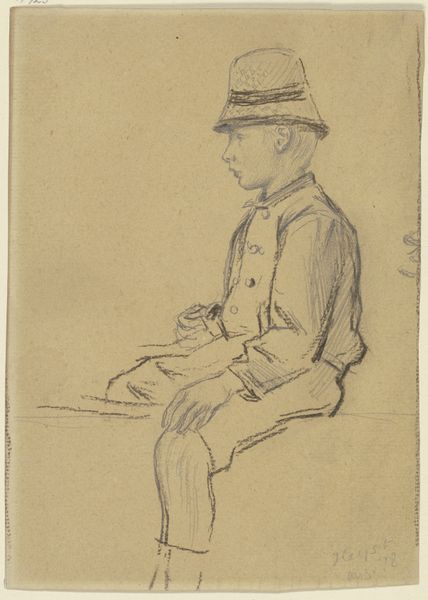
drawing, pencil
#
portrait
#
drawing
#
caricature
#
pencil
#
portrait drawing
#
realism
Copyright: Public Domain
Curator: Allow me to introduce Carl Hoff’s “Portrait of Rudolph," a pencil drawing currently residing here at the Städel Museum. Editor: What strikes me immediately is the stillness of it. He’s captured a quiet thoughtfulness in the sitter's downcast gaze, even in this rather simple pencil sketch. Curator: Absolutely. Hoff was quite skilled at rendering realistic detail and nuance. The way he models the light on Rudolph's face, the crisp lines of his military cap, suggests a disciplined yet sensitive character. Editor: Military, definitely. There’s a formality to him, the rigid collar. I wonder about the social context—was Hoff commissioned, or was this a personal study? It's interesting to think about how the portrait of a military man functions within the museum space—are we meant to honor him, question the authority he embodies, or simply contemplate him as an individual? Curator: It’s a beautiful tension, isn't it? The rigid formality you mention softened by the subtlety of the drawing. I love how Hoff renders the shadows and nuances of his face. And that delicate signature at the bottom feels quite personal—almost whispered. It makes me wonder about Rudolph as an individual outside his military identity. Editor: Exactly! We often look at these portraits as historical records, documents of status and power, but what I find compelling here is the quiet interiority. We are confronted with this very human individual at the mercy of history. Curator: Ultimately, it's this interplay of observation and insight, reality and artistic sensibility, that elevates the portrait. Hoff lets us observe both the sitter’s likeness and the human condition itself. Editor: A beautiful sentiment—yes. Thanks for highlighting the nuances. I leave this portrait with much food for thought on portraiture and how individuals are made visible, historically, through art.
Comments
No comments
Be the first to comment and join the conversation on the ultimate creative platform.

